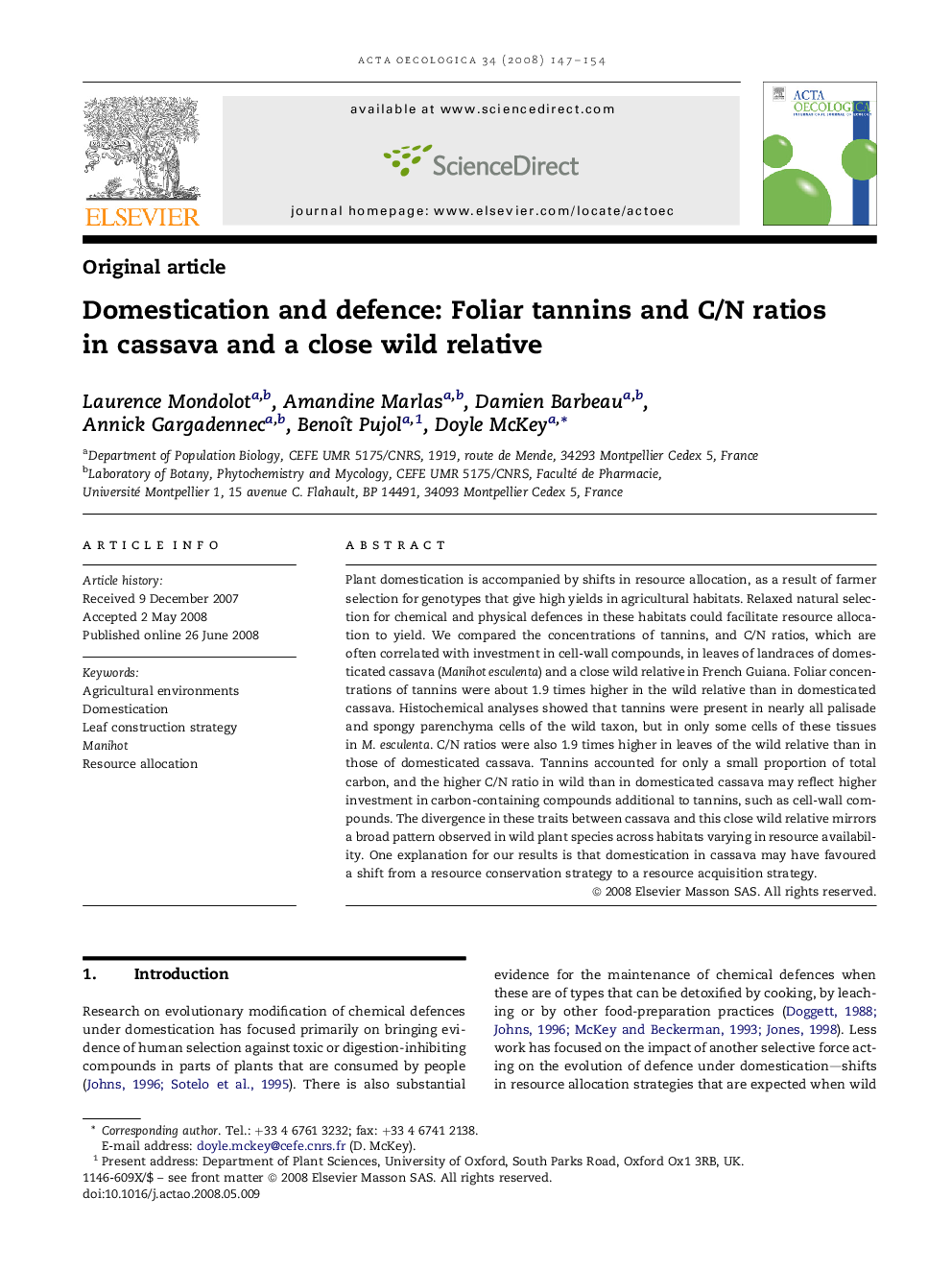| Article ID | Journal | Published Year | Pages | File Type |
|---|---|---|---|---|
| 4381518 | Acta Oecologica | 2008 | 8 Pages |
Plant domestication is accompanied by shifts in resource allocation, as a result of farmer selection for genotypes that give high yields in agricultural habitats. Relaxed natural selection for chemical and physical defences in these habitats could facilitate resource allocation to yield. We compared the concentrations of tannins, and C/N ratios, which are often correlated with investment in cell-wall compounds, in leaves of landraces of domesticated cassava (Manihot esculenta) and a close wild relative in French Guiana. Foliar concentrations of tannins were about 1.9 times higher in the wild relative than in domesticated cassava. Histochemical analyses showed that tannins were present in nearly all palisade and spongy parenchyma cells of the wild taxon, but in only some cells of these tissues in M. esculenta. C/N ratios were also 1.9 times higher in leaves of the wild relative than in those of domesticated cassava. Tannins accounted for only a small proportion of total carbon, and the higher C/N ratio in wild than in domesticated cassava may reflect higher investment in carbon-containing compounds additional to tannins, such as cell-wall compounds. The divergence in these traits between cassava and this close wild relative mirrors a broad pattern observed in wild plant species across habitats varying in resource availability. One explanation for our results is that domestication in cassava may have favoured a shift from a resource conservation strategy to a resource acquisition strategy.
